Monthly Wine News
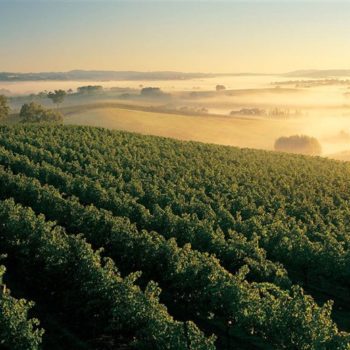
This month, ShelfLife's resident sommelier Helen Coburn takes a closer look at iconic producer Michel Lynch and also at Austrlia, who as a producer has gone from strength to strength over the decades...
15 March 2017
Reserve a space for Michel Lynch
Importers Barry & Fitzwilliam recently presented an extensive tasting of Michel Lynch wines to show some of the new additions to the range. Lynch is an historic name, with the company’s founder, Thomas Lynch, being a son of one of the Irish Wild Geese who left Ireland in 1691. During the 18th century, Thomas inherited the estate of Bages through his wife, and his son, Michel, held the property, now known as Lynch Bages, till 1824, when he sold it to the Jurine family. The present owners, the Cazes family, purchased it in 1938, and since then its reputation for top wines has grown steadily. Though only what’s called a Fifth Growth in the Bordeaux classification, its wines are widely regarded as being as good as virtually anything in the Second.
The Lynch Bages vineyards are in Pauillac, on what’s called the Bordeaux Left Bank, and they turn out around 30,000 bottles per year. Fine vintages, such as 2000, 2005 and 2010 cost upwards of €200 a bottle. For humbler mortals, however, the company produces a range of more affordable wines, starting at around €14 for those under the Michel Lynch label. Even better is their Chateau Bel Air which, retailing at around €20, is well worth the trade-up, if you’re feeling flush. Alongside these is a selection of organic and reserve wines which are seeing some brand refreshment and it was these that the Cazes family came to Dublin to introduce.
The tasting, to my mind, once again showed the advantage of a trade-up within the Lynch range. The Michel Lynch Bordeaux Red 2015 was nicely concentrated and I thought it was good enough to have benefited from some additional oak treatment. That’s not the way of entry point wines nowadays, however; a great many see little or no oak during vinification and much of the mass market seems to accept that happily enough. For my own part, I preferred the Reserve selection, which offered an elegant 2014 red, with a touch of evolution on nose and palate and smooth plummy finish. It’s expected to reach our stores in time for Easter and, at around €20, I think it good value. There’s a very decent white to go with it, in the form of a half and half semillon sauvignon blanc. Just a touch of oak adds a slightly Burgundian waxy note to the nose and it has tasty yellow and green fruit flavours. Michel Lynch also offers an organic range, Nature. The white and red are not dissimilar in character to the basic Michel Lynch but are slightly more concentrated; the red would go nicely with your Easter lamb.
WINE UPS & DOWNS
Ups
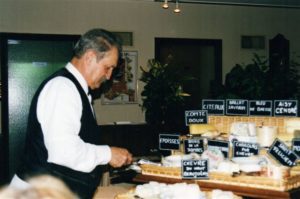 A couple of recent tastings of Beaujolais confirm that this French stalwart continues on an improving curve. Barrel ageing is very rare in this region and the wine is generally in unoaked, young-drinking style, with fresh summer and redcurrant fruit flavours. Markets have been responding to the rise in quality by generating a rise in sales; the UK market saw a volume increase of almost 32% in Beaujolais cru wines during 2016, with a 12.78% increase in sales of Village labels.
A couple of recent tastings of Beaujolais confirm that this French stalwart continues on an improving curve. Barrel ageing is very rare in this region and the wine is generally in unoaked, young-drinking style, with fresh summer and redcurrant fruit flavours. Markets have been responding to the rise in quality by generating a rise in sales; the UK market saw a volume increase of almost 32% in Beaujolais cru wines during 2016, with a 12.78% increase in sales of Village labels.
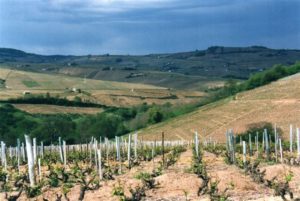 California-based University College Davis has long been one of the world’s top wine schools and during its training programmes large quantities of wine are produced by staff and students. Until now, most of this wine went down the sink but a new law means the wine can be legally sold to nearby producers, with some likely to be retained under a college label. Local ecologists are delighted; the dumping of over 90,000 litres of Davis wine per year was widely considered to be something of an environmental blight.
California-based University College Davis has long been one of the world’s top wine schools and during its training programmes large quantities of wine are produced by staff and students. Until now, most of this wine went down the sink but a new law means the wine can be legally sold to nearby producers, with some likely to be retained under a college label. Local ecologists are delighted; the dumping of over 90,000 litres of Davis wine per year was widely considered to be something of an environmental blight.
Downs
According to Fox News, an attempt by the National Organisation for Women to boycott Donald Trump’s wines has ended in failure. The wines are produced in Virginia and include Trump Meritage Monticello Red, as well as a white, rosé and sparkler. Unfortunately for the campaigners, their efforts served only to publicise the wine, which apparently has sold out at a number of outlets.
As debate continues around the implications of Brexit for the wine industry, comes a proposal that, following exit, Britain could introduce a sliding excise scale, favouring lower alcohol wines and having a higher rate on wines at 14% or more. Under current EU law, this is not permitted, and would certainly have an impact on wines from parts of Italy and the south of France in particular.
AUSTRALIA SHOWS ITS METTLE
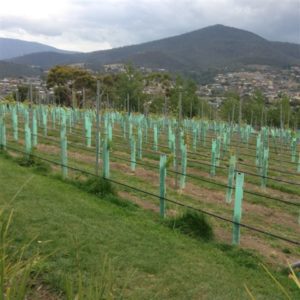 After a few quiet years, it seems that the Australian wine industry is taking renewed interest in the Irish market. Recently, the annual Australia Day Tasting was held at the RHA Gallery in Dublin and, according to Wine Australia, it was Ireland’s largest trade tasting event to date, with over 250 wines on show from 21 regions. Inevitably, with newly released figures showing strong Australian growth in the premium sector, there was a lot of positivity about.
After a few quiet years, it seems that the Australian wine industry is taking renewed interest in the Irish market. Recently, the annual Australia Day Tasting was held at the RHA Gallery in Dublin and, according to Wine Australia, it was Ireland’s largest trade tasting event to date, with over 250 wines on show from 21 regions. Inevitably, with newly released figures showing strong Australian growth in the premium sector, there was a lot of positivity about.
Was it churlish, then, to notice that several well known and attractive wine labels were not on show? A few, while still being imported here, may have been held back for reasons of space, and some agents chose not to present at the tasting. Others, however, disappeared from the Irish market in the wake of the crash and have not returned. Among familiar yet absent names were Devil’s Corner from Tasmania, Wyndham Estate, Angove, Glazer, Brown Brothers, Cape Mentally, Mitchell’s and Mad Fish. Mitchell’s had a decent cabernet in the special “Inspired” line-up but, from what I could gather, it is not being sold here. Mad Fish was among several labels currently seeking distribution in Ireland and its wines are really examples that should be available here.
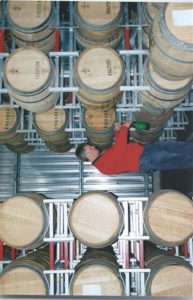 The Australia Day tasting is, of course, something of a travelling show, and the Irish stage is a somewhat truncated one compared with the London tasting. There, over 1,100 wines were offered from 250 producers, and whereas there’s no sense in comparing the Irish market with one that’s more than 10 times larger, it’s to be hoped that as Ireland continues to recover some of these favourite labels will be encouraged to travel on to the Irish tasting and our shelves.
The Australia Day tasting is, of course, something of a travelling show, and the Irish stage is a somewhat truncated one compared with the London tasting. There, over 1,100 wines were offered from 250 producers, and whereas there’s no sense in comparing the Irish market with one that’s more than 10 times larger, it’s to be hoped that as Ireland continues to recover some of these favourite labels will be encouraged to travel on to the Irish tasting and our shelves.
Some of the wines felt a tad expensive and that may be partly due to the strong Australian dollar over some years. As well as that, some wines imported from Australia come to Ireland via the UK and the fall in sterling may have had an impact, with British agents obliged to pay more for shipments. Just the same, there is still some value to be had for the consumer and, once you pass entry point prices, quality appears consistently high and, for some regions, even improving.
Here are some highlights:
Janz Premium Cuvee Sparkling Tasmania (Cassidy €32): I’ve almost never had a wine from Tasmania that wasn’t excellent. This keeps up the standard, but it is expensive. Given that a number of outlets have offers on champagne which would come in at a lower price, selling this could be tough.
Innocent Bystander Muscat d’Alexandria (Liberty €14): 5.5% alcohol. Lush plum and summer fruits with well balanced sweetness. A great value dessert wine.
Willunga 100 McLaren Vale Grenache Rose 2016 (Liberty €17): Good, but again a little more expensive than the typical rosé drinker is inclined to pay. Good with white fish and meats.
WHITES
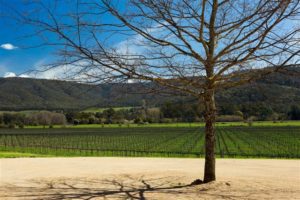 Yalumba Y Series South Australia Riesling 2016 (Cassidy €16): Ripe yet fresh with just a hint of petrol beneath tasty green fruit. Decent value for money.
Yalumba Y Series South Australia Riesling 2016 (Cassidy €16): Ripe yet fresh with just a hint of petrol beneath tasty green fruit. Decent value for money.
Coriole McLaren Vale Chenin Blanc 2016 (Wines Direct €15): Fresh green apple fruit with a slightly peachy note beneath. Would be great with baked cod or sea bass.
McGuigan Black Label Chardonnay 2016 (Austr Vintage, €12): Lively citrus fruit and good value for money; a great wine for a party.
Wakefield Estate Clare Valley Chardonnay 2015 (Dalcassian €14): Reasonable weight for the money and is flavoursome enough to go with roast pork or chicken.
D’Arenberg The Hermit Crab Viognier Marsanne 2016 (Febvre €17): Fresh citrus filled out with hints of more tropical apricot; nicely balanced alcohol and acidity.
De Bortoli Windy Peak Yarra Chardonnay 2014 (Febvre €16): Sound stuff and decent value; works well with stir fries.
Penfolds Koonunga Hill Autumn Riesling 2015 (Findlater, O’Briens €22): A long time favourite of mine, this elegant wine in its old world bottle makes a splendid gift, especially to yourself.
Katnook Founders Block Coonawarra Chardonnay 2014 (Findlater €18): Alcohol 13.5%. In more traditionally Australian mode than some other chardonnays; ripe citrus with hints of spice make this a good companion for roast turkey.
REDS
Yalumba Triangle Block Eden Valley Shiraz Viognier 2014 (Cassidy €23): The blend is traditional in France’s Cote Rotie on the northern Rhone. Yalumba worked hard for many years to develop their own style and, while a little pricey, this is a seriously tasty wine.
Kangarilla Road McLaren Vale Sangiovese Primitivo Nebbiolo 2013 (O’Briens €18): Something different – and firm Italophiles could be put off by this blend of Italian varieties which don’t normally go together. Give it a go, though; its fresh red fruits make it a good companion for duck.
Peter Lehmann Portrait Shiraz 2013 (Comans €17): The 14.5% alcohol tastes balanced on the palate as do the flavours of ripe plum and blackberry. Great with game and beef.
Wakefield Jaraman Clare McLaren Vale Shiraz 2014 (Dalcassian €22): Quite a big wine, with a strong burst of plummy fruit. Good with red meats but try it with hard cheeses, too.
D’Arenberg The Custodian McLaren Vale Grenache 2014 (Febvre €18): Again, this isn’t overheated by its 14.3% alcohol; indeed, for a blend made primarily from grenache, this level is quite restrained! Ripe strawberry and plum fruits and it works well with roast pork and turkey as well as red meats.
De Bortoli Windy Peak Pinot Noir 2015 (Febvre, good availability €16): Sound, simple style that works well with chicken and stir fries.
De Bortoli Villages Heathcote Syrah Grenache 2015 (Febvre €20): This is aged in older 500 litre oak casks and it’s a relatively upfront fruity style. Good with a steak.
Katnook Founders Block Coonawarra Cabernet Sauvignon 2014 (Febvre, good availability €18): Classic cassis fruit clad in decent tannins. Good value.
Jim Barry Barry Brothers Clare Shiraz Cabernet 2014 (Cassidy, independents €24): Big, bold and unmistakably Australian. Loads of plum and blackcurrent fruit make this perfect with beef.
Innocent Bystander Yarra Pinot Noir 2015 (Liberty €22): Tasty summer fruit with a kick of plum. Very versatile food wine yet enjoyable on its own as well.
Clonakilla Hilltops Canberra Syrah 2015 (Liberty €33): One of Australia’s best syrahs – I only wish we could see more of it. Great
gift wine.
Thorn-Clarke Terra Barossa Cabernet Sauvignon 2013 (JC Kenny €16): Ripe plum and darker fruits; again, steaks, roasts and hard cheeses will make good companions.
Wynns Estate Coonawarra Shiraz 2015 (McCormaic €20): Tasty autumn fruits with warming finish. Great dinner wine for a cold night.



 Print
Print


Fans 0
Followers